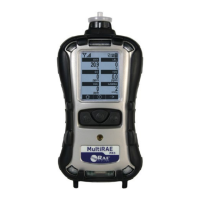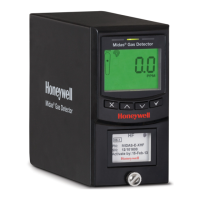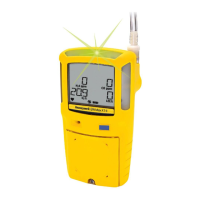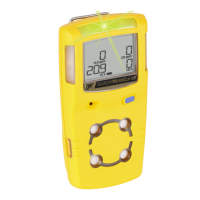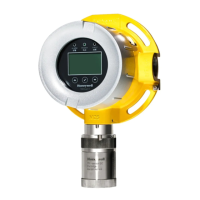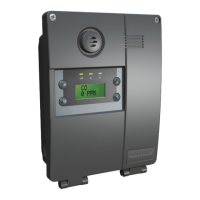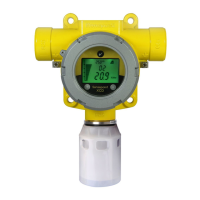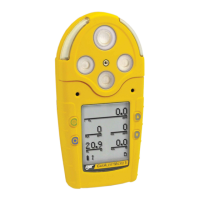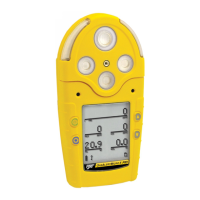Manual Alarms Test
Under Normal Operation Mode and non-alarm conditions, the buzzer (audible alarm), vibration,
visible alarms, and backlight can all be tested anytime by pressing [Y/+] twice. If any alarm does
not respond, check the alarm settings in the Programming Menu to make sure all alarms are
enabled (selected setting under Programming/Alarms/Alarm Settings should be “All Enabled”). If
any alarms are enabled but not functional, the instrument should not be used.
Bump Testing and Calibration
Honeywell recommends that a bump test be conducted prior to each day’s use. The purpose of a
bump test is to ensure that the instrument’s sensors respond to gas and all the alarms are
enabled and functional.
l
The MultiRAE multi-gas detector must be calibrated if it does not pass a bump test when
a new sensor is installed, after sensor maintenance has been performed, or at least once
every 180 days, depending on use and sensor exposure to poisons and contaminants.
l
Calibration and bump test intervals and procedures may vary due to national legislation
and company policy.
A bump test or calibration can be performed either manually or using the AutoRAE 2 Automatic
Test and Calibration System. When a bump test or calibration is done manually, the instrument
makes a pass/fail decision based on sensor performance, but the user still has the responsibility
to make sure all the alarms are enabled and functional.
An AutoRAE 2 bump test or calibration takes care of both the sensor and alarm tests. Consult the
AutoRAE 2 User’s Guide for details.
Honeywell MultiRAE Series™ 121 User Manual
CHAPTER
12
Calibration and Testing
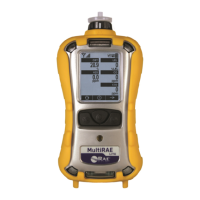
